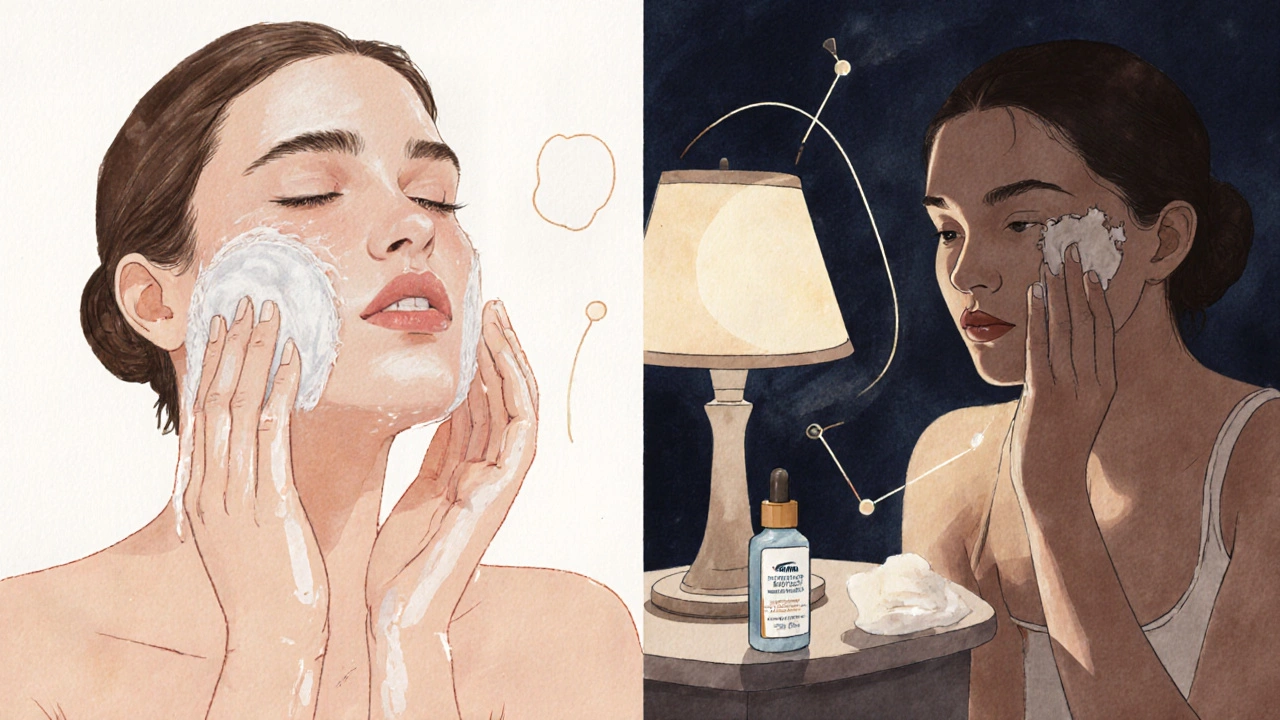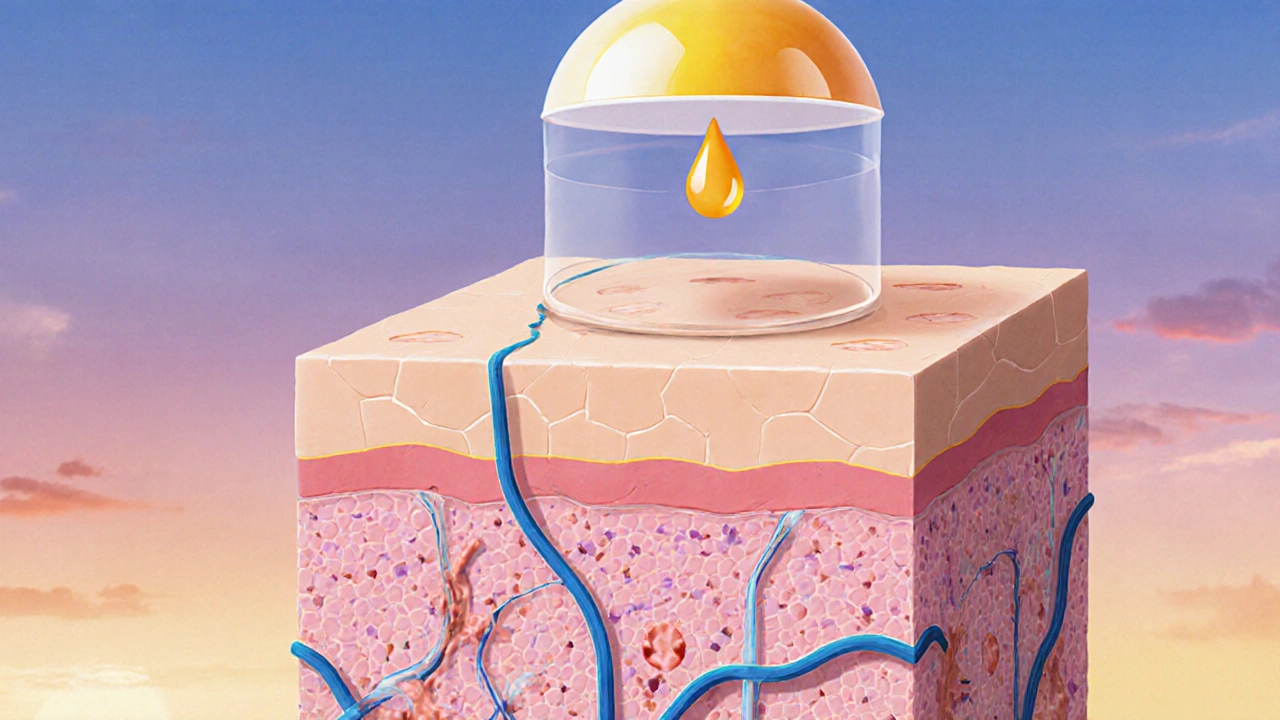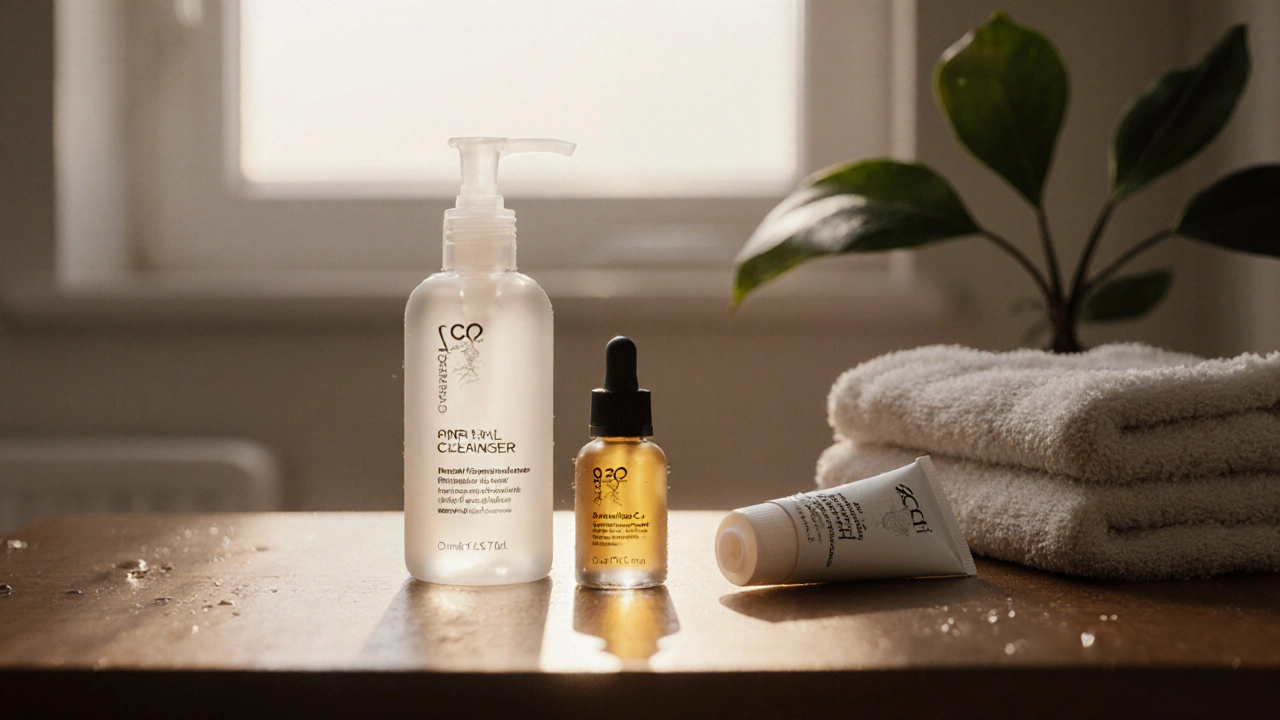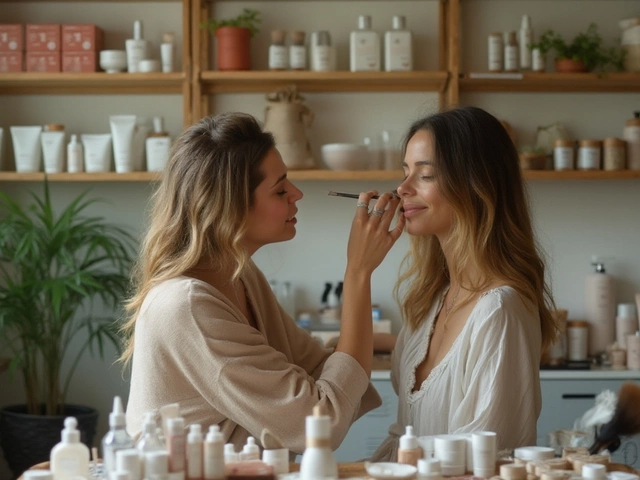Most people think a good skin care routine means slathering on every product they see online. But that’s not how healthy skin works. Overloading your face with ten different serums, exfoliants, and oils doesn’t make it glow-it makes it irritated, red, and confused. A complete skin care routine isn’t about quantity. It’s about the right steps, at the right time, for your skin type. And it’s simpler than you think.
What Your Skin Actually Needs
Your skin isn’t a blank canvas. It’s a living barrier that works 24/7 to protect you from pollution, UV rays, bacteria, and dry air. In Melbourne, where winters are damp and summers can hit 40°C, your skin faces constant stress. The goal of a good routine isn’t to fix problems-it’s to support your skin’s natural function.
Every skin type-oily, dry, combination, sensitive-needs the same core pillars: clean, hydrate, protect. Everything else is optional. Skip the trendy 12-step routines. Start with these three.
Morning Routine: Cleanse, Hydrate, Protect
Mornings are about preparation. Your skin has been repairing overnight. Now it needs to face the day.
- Cleanse gently. Use a mild, water-soluble cleanser. No foaming agents, no scrubs. Just enough to remove overnight oil and sweat. If you didn’t wear makeup or sunscreen last night, water alone might be enough.
- Apply serum. Pick one active ingredient that matches your goal: vitamin C for brightness, niacinamide for redness, or hyaluronic acid for hydration. Use a pea-sized amount. Less is more.
- Moisturize. Even oily skin needs moisture. Choose a lightweight, non-comedogenic formula. Look for ingredients like glycerin or squalane. Skip heavy creams unless your skin feels tight after washing.
- Sunscreen, every single day. This isn’t optional. UV damage causes 90% of visible aging. Use SPF 30 or higher. Reapply if you’re outside for more than two hours. Mineral sunscreens with zinc oxide are gentler on sensitive skin.
That’s it. Four steps. No toners, no essences, no facial mists unless you’re using them for a specific reason. Most people skip sunscreen and wonder why their skin looks dull or gets dark spots. Sunscreen is the most powerful anti-aging product you own.
Night Routine: Cleanse, Treat, Repair
Nighttime is when your skin shifts into repair mode. This is where you address concerns like acne, fine lines, or uneven tone.
- Cleanse thoroughly. Wash off sunscreen, pollution, and makeup. Use an oil-based cleanser first if you wear makeup or sunscreen. Follow with a water-based cleanser to remove residue. Double cleansing isn’t for everyone-but if you wear SPF daily, it helps.
- Treat. This is your chance to use stronger actives. Retinoids (like retinol) are the gold standard for anti-aging and acne. Start with low strength (0.1%-0.3%) 2-3 nights a week. If your skin stings or peels, cut back. Other options: azelaic acid for redness, or glycolic acid for texture. Use only one active per night.
- Moisturize. Night is the time for richer textures. Look for ceramides, peptides, or squalane. These help rebuild your skin barrier. If you’re using retinol, apply moisturizer first as a buffer to reduce irritation.
Don’t layer five serums at night. That’s how you trigger sensitivity. Pick one treatment, one moisturizer. Let your skin breathe.

Weekly Add-Ons: Exfoliation and Masks
Once or twice a week, you can add something extra. But only if your skin can handle it.
- Chemical exfoliants: AHAs (like glycolic or lactic acid) for surface texture. BHAs (like salicylic acid) for clogged pores. Use no more than twice a week. Never combine with retinoids on the same night.
- Clay masks: For oily or acne-prone skin. Use once a week to draw out excess oil. Avoid if your skin is dry or flaky.
- Hydrating masks: For dry or sensitive skin. Use after cleansing, leave on for 10 minutes, then rinse. No need to leave them on overnight.
Physical scrubs with sugar or walnut shells? Skip them. They tear microscopic holes in your skin. Chemical exfoliants work better and are safer.
What to Avoid
Here’s what most people do wrong:
- Using harsh soaps or bar cleansers. They strip your skin’s natural oils and leave it tight and dry.
- Applying retinoids or acids every day. That’s how you get red, peeling skin that takes weeks to recover.
- Skipping sunscreen because it’s cloudy. UV rays penetrate clouds. Up to 80% reach your skin on overcast days.
- Buying products based on Instagram influencers. Just because it’s trending doesn’t mean it works for your skin.
- Using too many products at once. Your skin can’t process more than 2-3 actives per day.
One of the biggest mistakes? Chasing perfection. Skin doesn’t need to be flawless. It needs to be healthy. Redness, dry patches, and occasional breakouts are normal. A good routine doesn’t erase them-it helps your skin recover faster.
How to Know If Your Routine Is Working
Give it at least six weeks. Skin cells turn over every 28-40 days. You won’t see results in three days.
Signs your routine is working:
- Your skin feels balanced-not oily, not tight.
- Breakouts are less frequent and less angry.
- Texture feels smoother.
- Your complexion looks more even.
- You’re not constantly adjusting products.
Signs it’s not working:
- Your skin stings or burns after applying anything.
- You’re breaking out more than before.
- Your skin feels dry, flaky, or raw.
- You’re using more than five products and still not seeing change.
If you’re stuck, simplify. Go back to cleanser, moisturizer, sunscreen. Add one active at a time. Wait four weeks. Then decide what to add next.

Adjusting for Your Skin Type
Not everyone needs the same things.
Oily skin: Focus on lightweight formulas. Use niacinamide to regulate oil. Avoid heavy oils like coconut oil. Salicylic acid helps unclog pores.
Dry skin: Prioritize ceramides and fatty acids. Use a humidifier in winter. Skip alcohol-based toners. Apply moisturizer while your skin is still damp.
Combination skin: Use different products on different areas. A lighter moisturizer on your T-zone, a richer one on your cheeks. Don’t treat your whole face the same.
Sensitive skin: Stick to fragrance-free, minimal ingredient lists. Patch test new products behind your ear for 3 days. Avoid retinoids, AHAs, and essential oils until your barrier is strong.
What About Supplements and Diet?
Food matters, but not like you think. No amount of collagen powder will fix a routine that skips sunscreen. But a diet rich in omega-3s (like salmon, flaxseeds), antioxidants (berries, leafy greens), and water helps your skin stay resilient.
Dehydration makes skin look dull and flaky. Drink enough water-not because it’s trendy, but because your skin needs it to function.
Supplements like vitamin D or zinc might help if you’re deficient, but they’re not magic bullets. Fix your routine first. Then consider supplements if you have a diagnosed deficiency.
Final Thought: Less Is More
A complete skin care routine isn’t about the number of products. It’s about consistency, simplicity, and protection. You don’t need a bathroom cabinet full of bottles. You need three steps in the morning, three at night, and the discipline to stick with them.
Start small. Master the basics. Let your skin breathe. And for heaven’s sake-wear sunscreen every day. Everything else is just noise.
Do I need to use toner in my skin care routine?
No, toner isn’t necessary for most people. Modern cleansers don’t leave behind residue that needs removing. Toners were originally designed to remove soap scum from old-fashioned cleansers. Today, they’re mostly used for fragrance, alcohol, or marketing. If you like the feel of a hydrating toner with hyaluronic acid, use it-but don’t think it’s essential.
Can I use the same products morning and night?
You can, but you shouldn’t. Morning is for protection (sunscreen, antioxidants). Night is for repair (retinoids, stronger actives). Using retinol in the morning can make your skin more sensitive to the sun. Using sunscreen at night is pointless. Match the product to the time of day.
How long should I wait between applying skin care products?
You don’t need to wait minutes between steps. Let each product absorb for 30-60 seconds before applying the next. If you’re using a retinoid, wait 10-15 minutes after applying it before moisturizing to reduce irritation. Otherwise, just let the product sink in naturally. Rushing or waiting too long doesn’t improve results.
Is expensive skin care better than drugstore brands?
Not usually. Many high-end products cost more because of packaging, branding, or fragrance-not better ingredients. Brands like CeraVe, The Ordinary, and La Roche-Posay offer effective, science-backed formulas at low prices. Check the ingredient list. If it has the same active (like niacinamide, hyaluronic acid, retinol) as a pricey product, the cheaper one works just as well.
What should I do if my skin gets irritated?
Stop using everything new. Go back to just a gentle cleanser and a simple moisturizer with ceramides. Don’t use retinoids, acids, or scrubs for at least a week. Let your skin calm down. When you reintroduce products, add them one at a time, every 7-10 days. If irritation continues, see a dermatologist. You might have a compromised skin barrier or an allergy.





